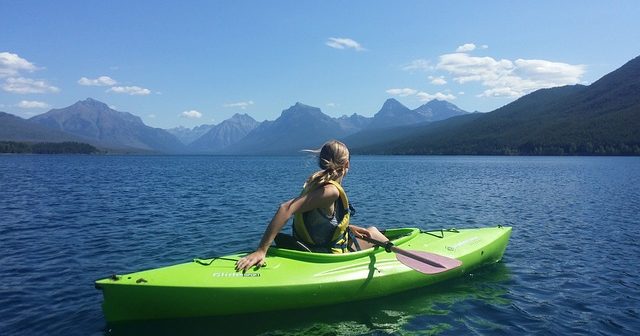If you’re interested in trying out kayaking for the very first time, you should know that it’s really easy to get started. People from many different age groups enjoy kayaking. The beauty of kayaking is that it may be a gentle and relaxing activity or it may be extreme and challenging…or anything in between!
Once you get the hang of it, you’ll probably find that being out on the water, enjoying the tranquility of nature, is one of the best things in life. The fresh air and exercise will do wonders for your mind, body and spirit.
Plus, there are so many amazing places to discover while paddling a kayak, from local waterways to exotic lakes, rivers and oceans. Whether you want to chill out off of the shore of your neighborhood beach or cruise past the Walled Old Town of Dubrovnik in Croatia (or explore any other place under the sun), you’ll find that kayaking gives you access to so many fulfilling experiences.
With kayaking, there is always a world of intriguing possibilities.
Today, we want to share a range of important tips for beginners. Once you’ve read our detailed, easy-to-understand guide, you’ll be ready to move forward and make the most of your first kayaking adventure.
Contents
How to Get in a Kayak
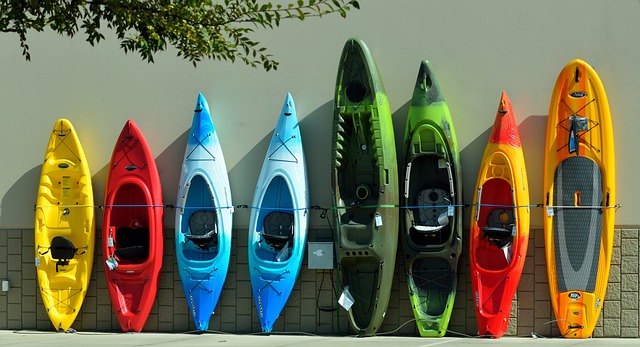
Learning how to get into a kayak is important. It’s not hard to do, but you should definitely try to do it correctly. The moment when you enter a kayak is one of the more vulnerable moments of the entire kayaking experience.
It’s possible to capsize if you don’t do it the right way. This is why learning the basics is the key to staying dry and safe.
If you have a buddy with you, that person may stabilize your vessel for you while you get in. We do think it’s smart to kayak with another person, especially when you’re a beginner. It’s the safest way to kayak. So, consider bringing someone along to help you enter the kayak safely…and to share good times out on the water!
If you need to get into a kayak on your own, you should know that choosing the right location will be helpful. Certain places are simply better places to get into a kayak. We recommend a sandy beach for hassle-free entry to your kayak.
Now, we’d like to discuss the smartest way to get into a kayak from a beach, a dock or a shoreline that is irregular or rocky. These are the three most common launch locations!
How to Get In a Kayak From a Beach
When you’re on a sandy beach, you will be able to hop into the boat right at the edge of the water. The kayak will be stabilized by the sand. After you get in, just use your hands to push yourself out out into the water. You’ve probably seen people get into their kayaks this way on beaches in your area and you can do it, too. It’s the fastest method and pretty much foolproof.
How to Get In a Kayak From a Dock
To get into a kayak from a dock, make sure that the dock is parallel to your kayak. Put your boat into the water near the lowest point of the dock. After you do this, sit on the dock, right next to the seat of your kayak. Then, place your feet inside of the vessel. Next, turn your entire body in the direction of the bow. Your feet should still be in the kayak when you turn the rest of your body.
Now, make sure that your paddle is near enough to reach for when you are in the boat. Then, hold onto the wooden dock with both of your hands. Once you’re holding onto the dock, lower yourself down into the kayak’s seat.
Try to lower yourself rapidly. It’s better to get yourself in there fast. Once you’re seated, grab your paddle and go.
How to Get In a Kayak From a Rocky Shoreline
You may need to launch from rocky shorelines sometimes. In these circumstances, you’ll find that it’s a bit harder to get into your vessel. The key to success is using your paddle for support while you enter the kayak. You may do this by putting your boat into the water, so that it’s parallel to the shoreline. After you do this, put the paddle at ninety degrees, with its shaft resting upon your kayak, right behind the seat.
One of the paddle blades should be supported on the shoreline. Next, take the paddle shaft that’s in your boat and grasp it with a single hand. Your other hand should be behind your back. The next step will be squatting down beside the vessel and then slipping into the kayak, while keeping some weight on your paddle, which is functioning as an outrigger.
How to Paddle
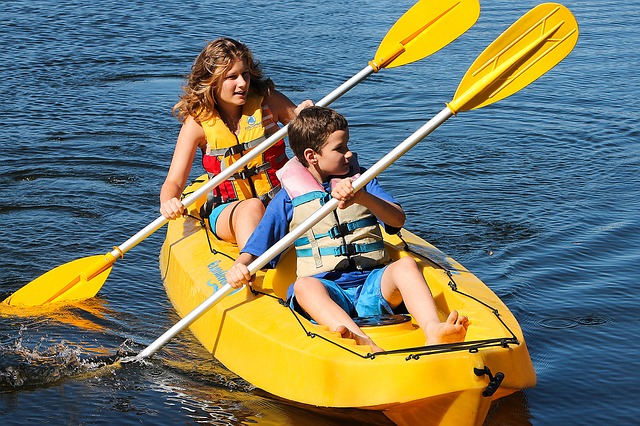
To start paddling, relax in your kayak seat and make sure that your watercraft is stable. Then, hold the paddle in a “hands over, thumbs under” position. Your grip on your paddle should be fairly relaxed. Be aware that most of your paddling power will come from your upper body.
With this in mind, wind your torso in order to gather power for strokes. When you use your upper body correctly, you’ll minimize strain on your shoulders, back and arms.
The first stroke that you should master is the basic “forward stroke”. You should aim for deep and even strokes. Start by winding your upper body. The blade of your paddle should be parallel to your feet. Bring the paddle out of the water at the point where your hand reaches your hip. Then, “unwind” your upper body. Afterwards, repeat the stroke on your other side.
There are different methods for turning. The basic one is to utilize your paddle to control your turns. Your paddle will act as a rudder. To turn with your paddle, drag it near the kayak. Your kayak will turn towards the same side of your blade. Bear in mind that you’ll lose a bit of forward momentum with this turning method. To get more momentum as you turn, do a “sweep stroke”.
To perform the “sweep stroke”, alternate strokes by doing a forward stroke on one side and a sweep stroke on the other side. Sweep your paddle widely on a single side of your kayak, until it connects with the stern, which is the back of your kayak.
When you continue this pattern, your boat will turn in a wide arc.
How to Safely Exit
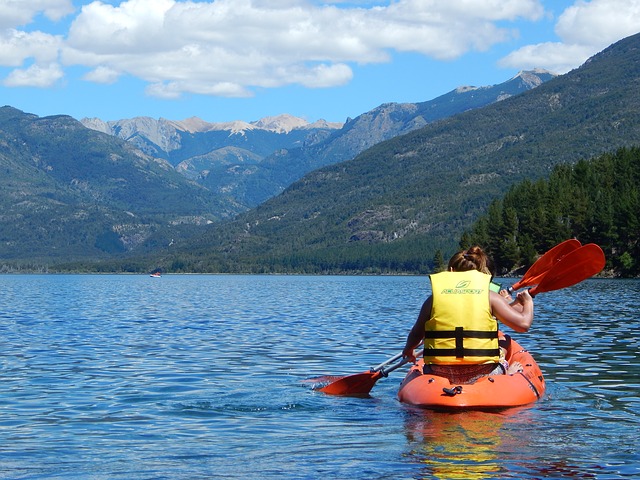
To get out of a kayak, move the boat until it’s parallel to the shore. Before you try to exit the vessel, be sure that the boat is in water which is ankle-deep or a bit deeper. Next, put your paddle across your boat, at the rear of your cockpit. Then, extend your paddle out a bit on the side that faces the shore. Afterwards, push your torso out of the kayak’s cockpit.
Sit upon the deck, with the paddle behind the boat’s cockpit, Next, put both of your hands behind your body. With the hand that is furthest away from the shoreline, hold onto the rear of the coaming, as well as the paddle. Newbies should know that the coaming is the raised border which is around a kayak’s cockpit. It’s designed to keep water out.
With your free hand, hold your paddle, just beyond the side of the boat. With the other hand, hold your paddle, just away from the side of the boat. Then, lean your boat towards the shoreline, until the paddle blade rests snugly against the seabed.
To continue, swing your legs out of your cockpit and over the boat’s side. The blade of the paddle should press into the ground. When it does, it will give you support and stability. Next, slide your body out of the boat, into the shallow waters.
When shorelines are sandy, speeding up your approach to shore will be smart. It’ll help you to beach your kayak effectively. Once it’s beached, getting out will be a total breeze.
What Not To Do In a Kayak
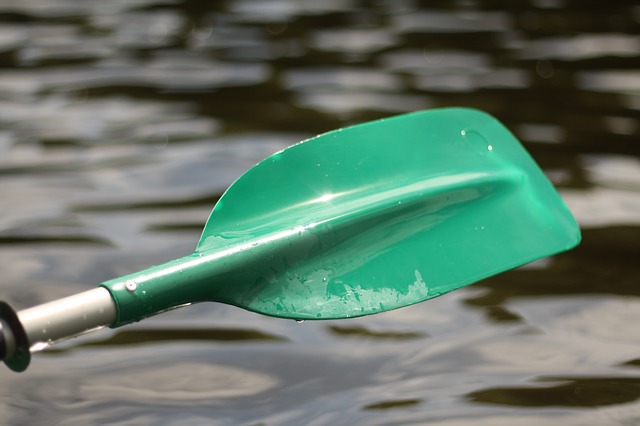
We don’t recommend going out in a kayak without a liberal application of sunscreen, even if there’s cloud cover. Sun will be more intense while you’re out in the boat. To avoid the risk of sunburn, photo-aging and skin cancer, be sure to put on plenty of high-SPF sunblock before you start paddling. You should also bring your sunscreen along in your kayak.
When you have it with you, you’ll be able to reapply it. There is some storage space in kayaks. It varies, but there will always be enough room for a bottle or tube of sunscreen.
Don’t Wear the Wrong Clothing
Also, think about putting on a hat, as well as a shirt that offers good sun protection. Some people wear long-sleeved shirts to shield their arms from the sun’s hot rays. You may find that wearing sunglasses is smart, too. You’ll find it easier to steer your kayak when you’re wearing sunglasses. The sunglasses will cut glare and make it easier to maneuver.
Don’t Skimp on Trip Planning
Putting a bit of thought into trip planning will be important. How you pace a trip should be decided based on weather conditions, your own physical fitness level (and the level of physical fitness of your companions, if you’re travelling with others), how many people are going on the trip and your kayaking experience level.
Since this guide is for beginners, we recommend shorter trips at first.
Once you’ve planned your trip, be sure that you pack your kayak the smart way. This means paying attention to balance, with a mind to making certain that the bow of your boat won’t dive due to an uneven cargo load. If you don’t balance the load properly, you may need to adjust your padding frequently.
Don’t Let Blisters and Sores Form
Blisters and sores from using kayak paddles may be avoided. It’s best to prevent them, as they tend to create discomfort which puts a definite damper on kayaking pleasure! Over time, paddlers do develop thicker skin. However, at first, they are susceptible to blisters and sores.
The best tip for beginners is to keep hands dry. When hands are wet, they are softer. Softer skin is prone to chafing and friction. Also, keep in mind that gripping a paddle too strongly may trigger blisters or sores. Try to keep your grip a little bit relaxed in order to minimize the risk.
Putting on gloves is really the most effective way to stop blisters and sores before they start. Some people buy paddling gloves, while others put on whatever gloves they have around, such as surgical gloves, bicycling gloves or driving gloves. Also, bring a few Band-Aids along, just in case you need them.
If you want to treat any blisters or sores that do occur, try Zinc Oxide. It’s very healing and provides plenty of lubrication.
Don’t Kayak Without a Life Jacket
Some people do go out in kayaks without wearing life jackets, but they shouldn’t! While it may seem incredibly safe in a kayak, and it usually is, anything can happen. Weather can change all of sudden, water conditions can get rough when they were formerly serene and smooth…there are so many variables at play and these variables may cause a kayak to capsize.
When you’re wearing life jacket (or life vest), you’ll be able to stay afloat until you make it to shore or help arrives.
Equipment to Purchase or Rent
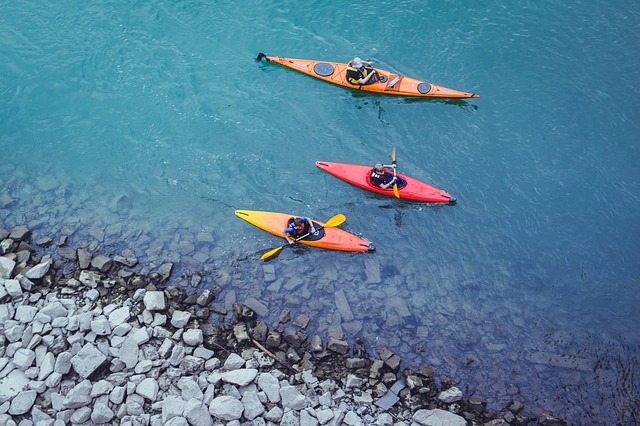
When it comes to accessing equipment for kayaking, you will have two choices. You may buy it outright or rent it. Most beginners rent their boats. However, there are wonderfully affordable inflatable kayaks out there, which are cheap to buy and amazingly durable.
When you buy your own inflatable kayak, you’ll be able to save money, as renting kayaks will get expensive over time. Also, when you buy your own inflatable or hard-shell kayak, you’ll be able to take it with you wherever you want to go. You won’t be limited to kayaking around the area where you rented your boat.
Aside from a kayak (a shorter style, with a sit-on-top or sit-in design will be best for a newbie; longer kayaks are faster, but harder to maneuver), you’ll need a paddle. When you rent or buy a kayak, the paddle should be included. Good ones are usually made from aluminum.
As well, you’ll need a life jacket. Kayak rental companies usually give them out to their customers at no extra charge. If you need to buy one, make sure that it fits well and comes from a trusted manufacturer. It should be safety-certified via a federal governing body.
Optional extras include sunscreen (highly recommended), sunglasses, kayaking clothes and accessories and hats. A waterproof bag for drinks, snacks and gear will also be a smart purchase.
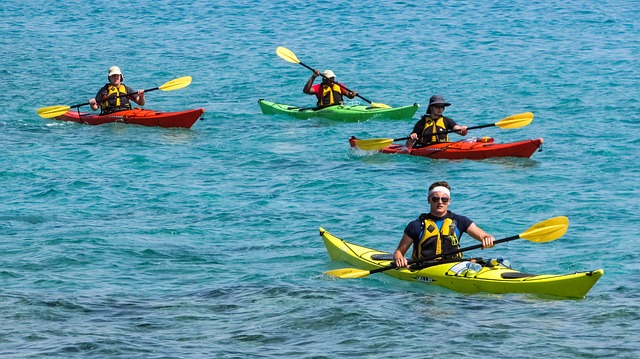
Kayaking is a hobby which usually becomes a passion.
Once you try kayaking, you’ll wonder why it wasn’t a part of your life before. So, why not give it a shot today? You’ll be glad that you did!

